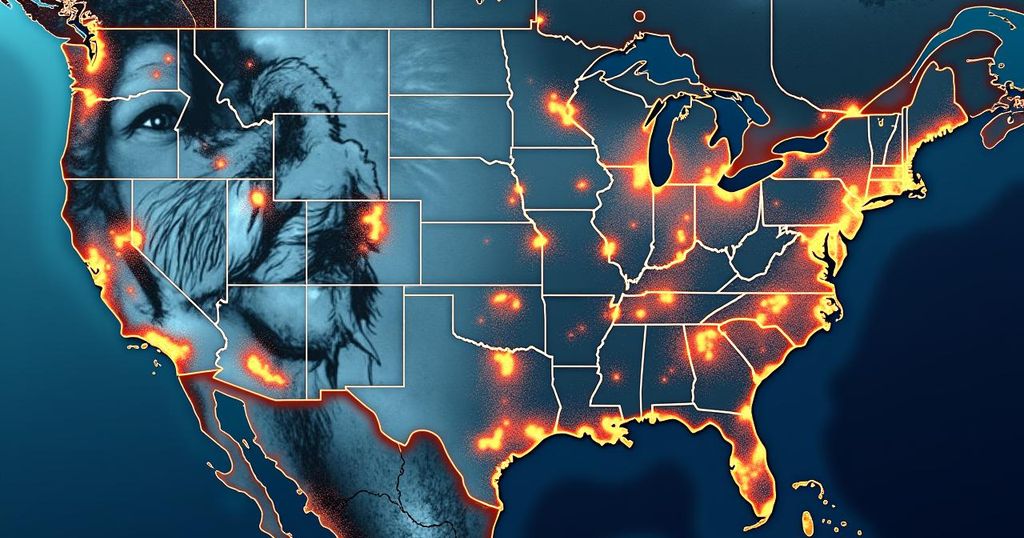The National Hurricane Center is monitoring three storm systems—Isaac, Joyce, and Kirk—after Hurricane Helene’s destructive impact on the U.S. Isaac is moving toward Europe, while Joyce may dissipate soon. Although Kirk could affect the Eastern Seaboard with rip currents, none of the storms are projected to make landfall in the U.S. Additional systems in the Caribbean and Atlantic are also being monitored for potential development.
The National Hurricane Center (NHC) is currently observing three named tropical storm systems—Isaac, Joyce, and Kirk—following the devastating aftermath of Hurricane Helene. Although the NHC has indicated that these systems are unlikely to affect the United States, their development merits scrutiny. Hurricane Helene, a Category 4 storm with maximum sustained winds of approximately 140 mph, made landfall last Thursday in the Big Bend region of Florida, causing substantial destruction and resulting in over 100 casualties across several southern and southeastern states. The storm’s impact included hazardous storm surges, severe winds, and heavy rainfall that posed threats to critical infrastructure, including dams, and led to significant flooding in Asheville, North Carolina. In the wake of Helene, the Atlantic hurricane season has intensified with the emergence of three named storms. Currently, post-tropical cyclone Isaac is situated northeast of the United States over the open ocean, exhibiting maximum sustained winds of 60 mph. Tropical Depression Joyce, located southeast of the U.S., has maximum sustained winds of 35 mph, while Tropical Storm Kirk, further southeast, boasts maximum sustained winds of 50 mph. Utilizing spaghetti models—computer-generated representations that predict potential storm trajectories—forecasts suggest that these storms will likely avoid making landfall in the United States. Predominantly, the projected paths for Isaac indicate a trajectory toward Europe, though it is expected to weaken before reaching land. Joyce is anticipated to dissipate by Monday, while Kirk is projected to veer northeast toward Europe, yet some models depict a possible southwest course toward Guyana, South America. Moreover, Kirk may induce indirect effects on the Eastern Seaboard, as warned by Will Ulrich, Warning Coordination Meteorologist with the National Weather Service, who stated that lethal rip currents associated with the storm could impact coastal areas hundreds of miles from its center. Accordingly, rip current warnings are likely to be issued for affected regions over the weekend and into early next week. Beyond these three storms, the NHC is also monitoring two additional systems, which may pose risks to the U.S. Gulf Coast. Disturbance 1, described as a large and disorganized low-pressure area over the western and southwestern Caribbean Sea, is currently associated with thunderstorm activity, although its potential for development into a named storm over the next 48 hours remains low, with only a 40 percent chance of formation anticipated within the week. The NHC notes that conditions may favor gradual development and a tropical depression could materialize while this system traverses the southern Gulf of Mexico or northwestern Caribbean Sea. Disturbance 2 has a slightly higher likelihood of developing, with a 30 percent chance of formation in the next 48 hours and an 80 percent chance within the upcoming week. This system, identified as a tropical wave located a few hundred miles south of the Cabo Verde Islands, is expected to encounter more favorable upper-level winds for gradual development as it slowly advances westward over the eastern tropical Atlantic. At this stage, spaghetti models for these two disturbances remain unavailable, reflecting their nascent development phase.
The Atlantic hurricane season often witnesses multiple storm systems developing sequentially, particularly following significant events such as hurricanes. The recent Hurricane Helene’s catastrophic landfall underscores the importance of monitoring subsequent storms that form in its wake. The National Hurricane Center plays a pivotal role in tracking these systems, providing vital information concerning their paths, potential impacts, and any resulting risks to the mainland United States, particularly in the Gulf Coast region. Understanding the facts surrounding these systems is crucial for preparedness and risk mitigation as the season unfolds.
In summary, while the three named storms—Isaac, Joyce, and Kirk—are largely expected to spare the United States from direct impact, their development and potential indirect effects merit close observation. The presence of disturbances with possible Gulf Coast implications further underscores the necessity for continued vigilance throughout the hurricane season. As conditions evolve, updates from the NHC will provide critical information for residents and authorities alike.
Original Source: www.newsweek.com






